Travelling around the country is not a very cheap proposition, especially if you want a few small creature comforts along the way. We’ve set ourselves a budget (2500/per day) that we feel is fairly realistic, given that even auto rickshaws today in small towns are quite expensive. We’ve also decided that we are a bit too ‘old’ to really rough it too much! In the last few weeks, around Tamil Nadu and Kerala, we have travelled extensively by state bus, eaten 100 rupee lunches and dinners, and generally tried to stay in budget. Its been great fun and sometimes a little challenging. Questions such as – shall we take the bus instead of an auto and have a little more money for a nice meal, are not uncommon. But along the way we also decided that in every state, we will splurge a bit and have one ‘expensive’ and comfortable couple of nights stay, in one superb location. In Tamil Nadu we stayed at the lovely Neemrana property in Tranquebar, well worth the expense. In Kerala, after much debate, we decided that this would happen in Munnar. Which bring us to the grand title of this post – the highest tea estate in the world.
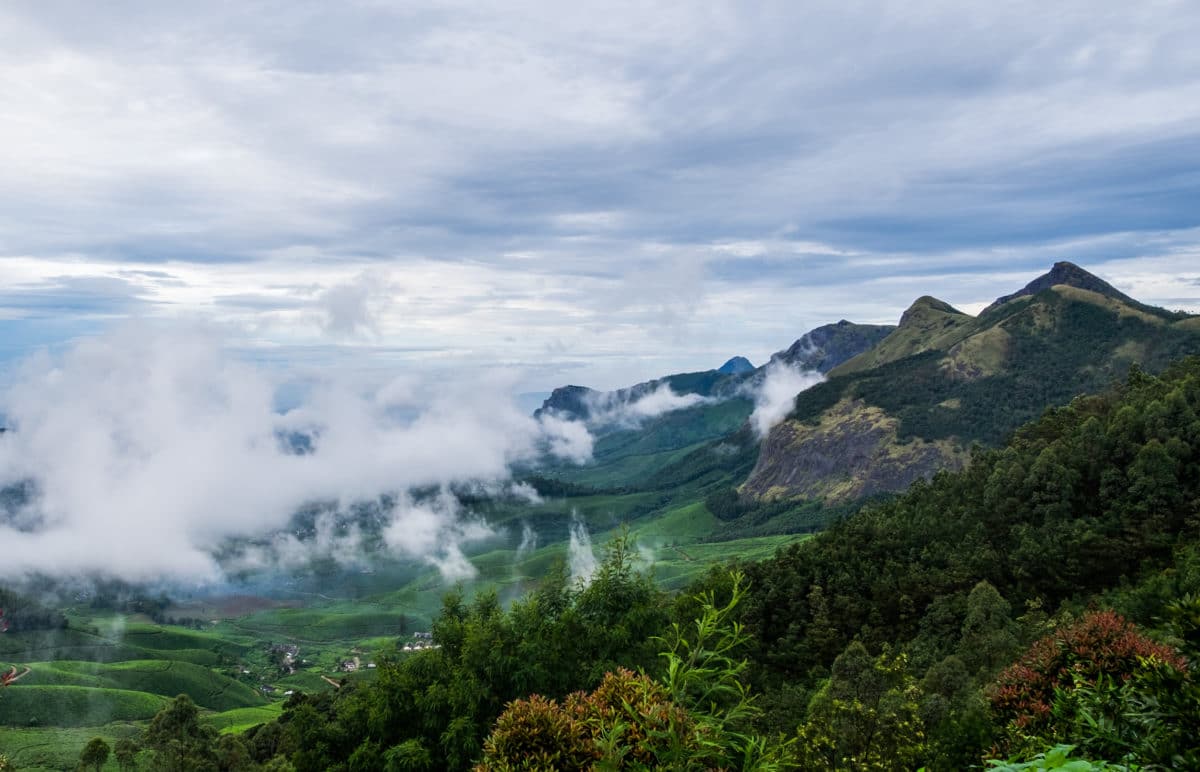
Kolukkumalai Tea Estate is indeed the highest tea estate in the world, at a height of 7,130 feet above sea level. Built in 1930, the two storey wooden factory still employs age old methods of organic tea farming and processing. Here the tea is processed in time tested methods, and the aroma of the old wooden factory mingling with the freshly picked tea leaves is distinct and enticing. It is here that we stayed for two days, where the management now lets out the old senior staff quarters for guests who want to spend their time wandering the tea plantations and walking above the clouds. The drive up is as beautiful as the view once you reach, and is a stark challenging contrast to all the beauty. Like all those who have gone before us, we must warn you, the drive can be just a bit rough.
From Munnar you have to travel an hour north to the small village of Suryanelli, either by bus or car. From there the only way through the other plantations, which are all private properties, to Kolukkumalai tea estate is by hired jeep. The jeep costs a steep Rs.1300 one way, and there is only one operator who plies up and down. The section from the village up to the top, where people go for the view, the tea factory visit and also to stand at the line between Kerala and Tamil Nadu, is only about 11km. It takes over an hour to get up these 11km! Yes, that true. There is no road, or rather the road is popularly known as the flying rocks section, where the jeep, with you in it, literally jumps from boulder to rock to boulder. At some sections you think it just might be better to walk, to save your back and butt and bones and teeth, but for the unfit like us, the steep climb was daunting. But, the whole time, all around you are tea shrubs as far as you can see, green and lush, and it is almost possible to forget this amazing ride you are on, till the next big bump. At this point you hold on for dear life, trying to find the best position on this rock and roll ride, wondering if the end will be worth the journey.
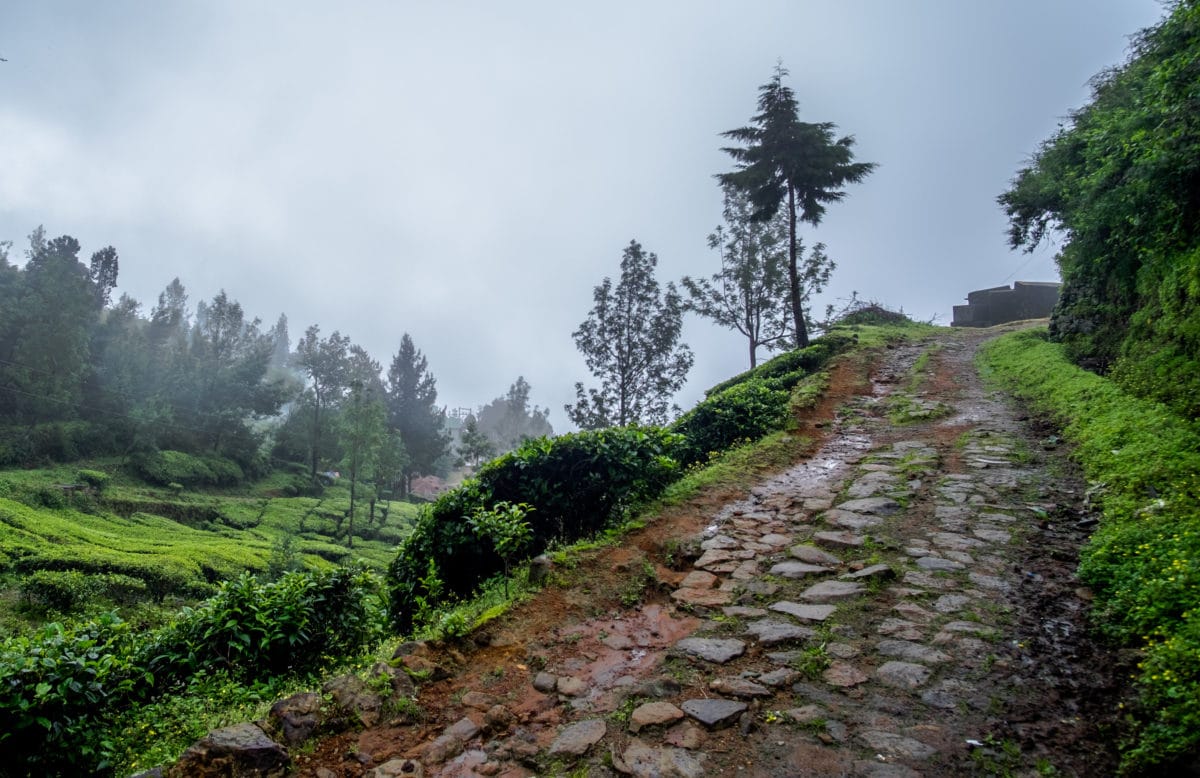
We finally reached the top, and it was completely white. The mist had settled in and we couldn’t see a thing. It was almost like you finished all that difficult homework well in time but didn’t get the chocolate at the end. It was disappointing, but we consoled ourselves knowing that we had the next two days, and the wonderful caretaker and manager, Abu, made us feel extremely comfortable and fed us well. The converted staff quarters are comfortable with a generous amount of space and basic amenities. If you are looking for a luxurious resort, this is not it, but it is very comfortable, the food is yummy and the staff is wonderful. We spent the day reading, gazing at the mist and rain, with cups of tea and a dash of rum with pomegranate juice to pass the time away, all the while willing the sun to be strong the next day.
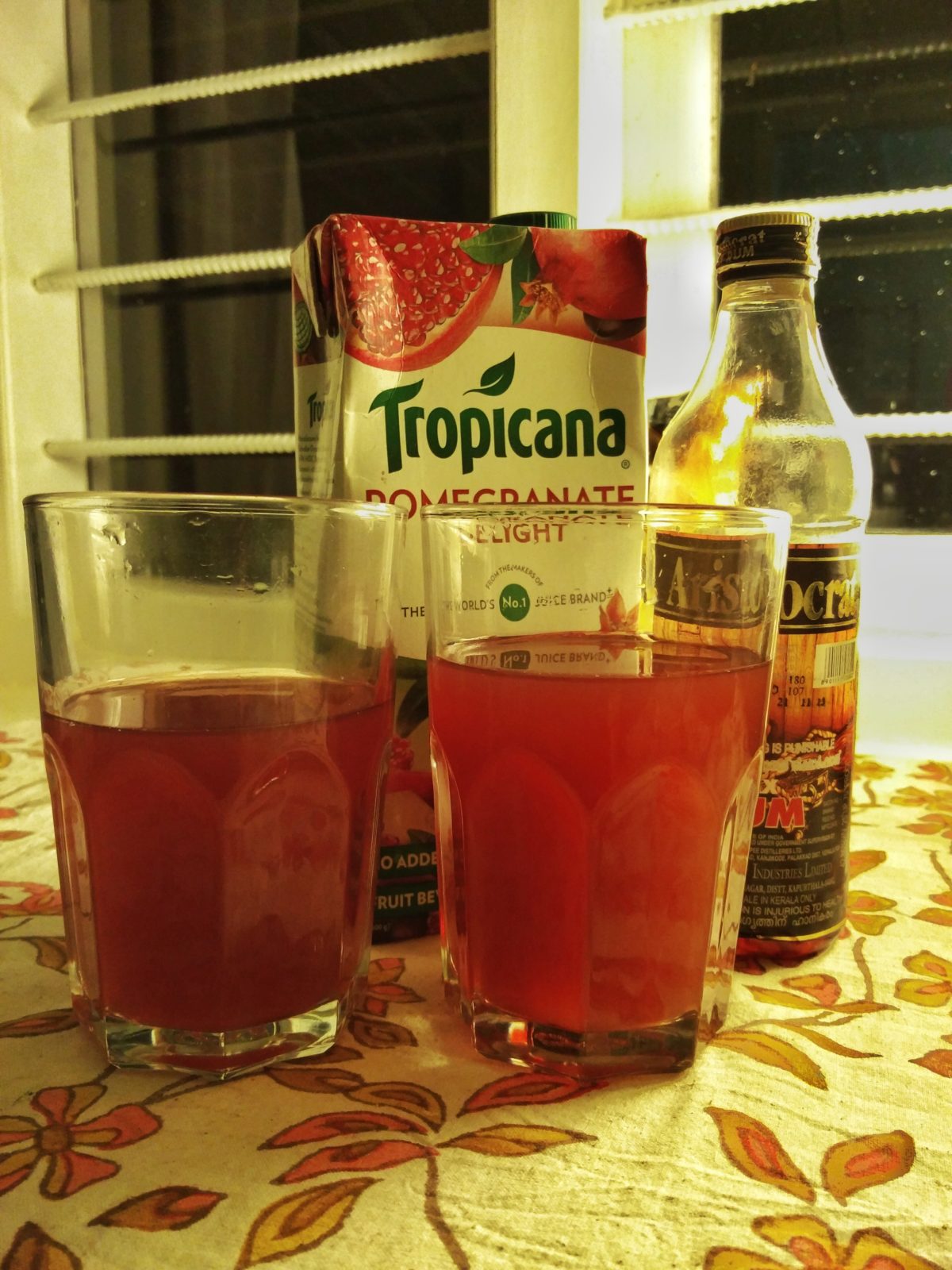
True to his word, Abu woke us up at 5.30am, to see the sunrise. We walked up to a plateau in the mountain, about half a km away, and were greeted by the views that everyones braves the bad roads for. For about fifteen minutes that morning we stood at the edge of the hills and looked at the beautiful sight before us. It didn’t matter where you stood, all around the views were amazing. The clouds had parted and before us was a stunning vista of craggy cliffs and gentle green carpets of tea. It was peaceful and quiet, with a little bit of sun and mist in the distance. If Kerala is God’s own country, then this must surely be paradise. But the respite was brief and soon enough the mist rolled in again, we were cut off from the mountains and valleys by a impenetrable blanket of white. We went up to the same spot twice more, at sunset and sunrise the next morning but never again did we see that magical sight.
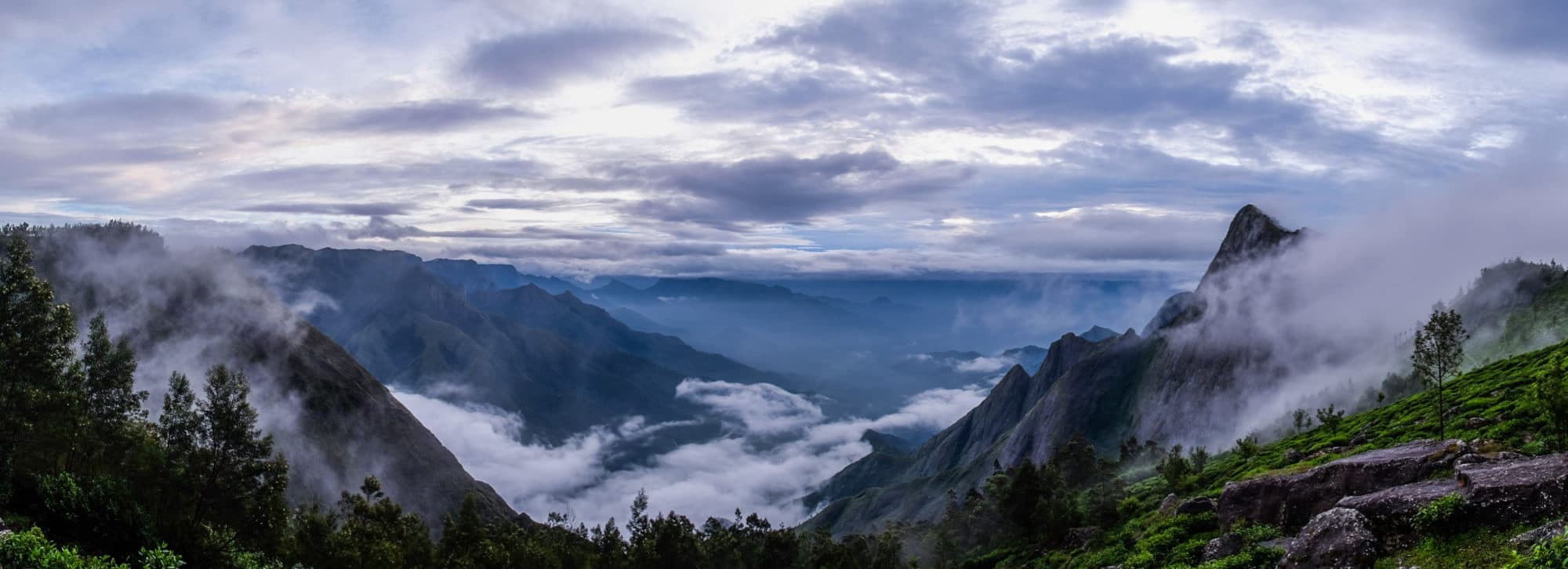
We spent the rest of the morning walking around after a tour of the old factory. The factory is charming and uses old methods of drying, crushing, fermenting and packaging. There is no modern machinery and the tea served at the factory store and cottage is mild and flavourful. It is distinctly different from tea we had tasted before, a testimony to care and precision that is involved in the old methods. The tour takes no more than 30 minutes, and we were free to wander about the estate. We saw other jeeps arriving, with people in various stages of distress, which abated rather quickly, as ours did, once they stepped out of the jeep and stepped into the beauty all around.
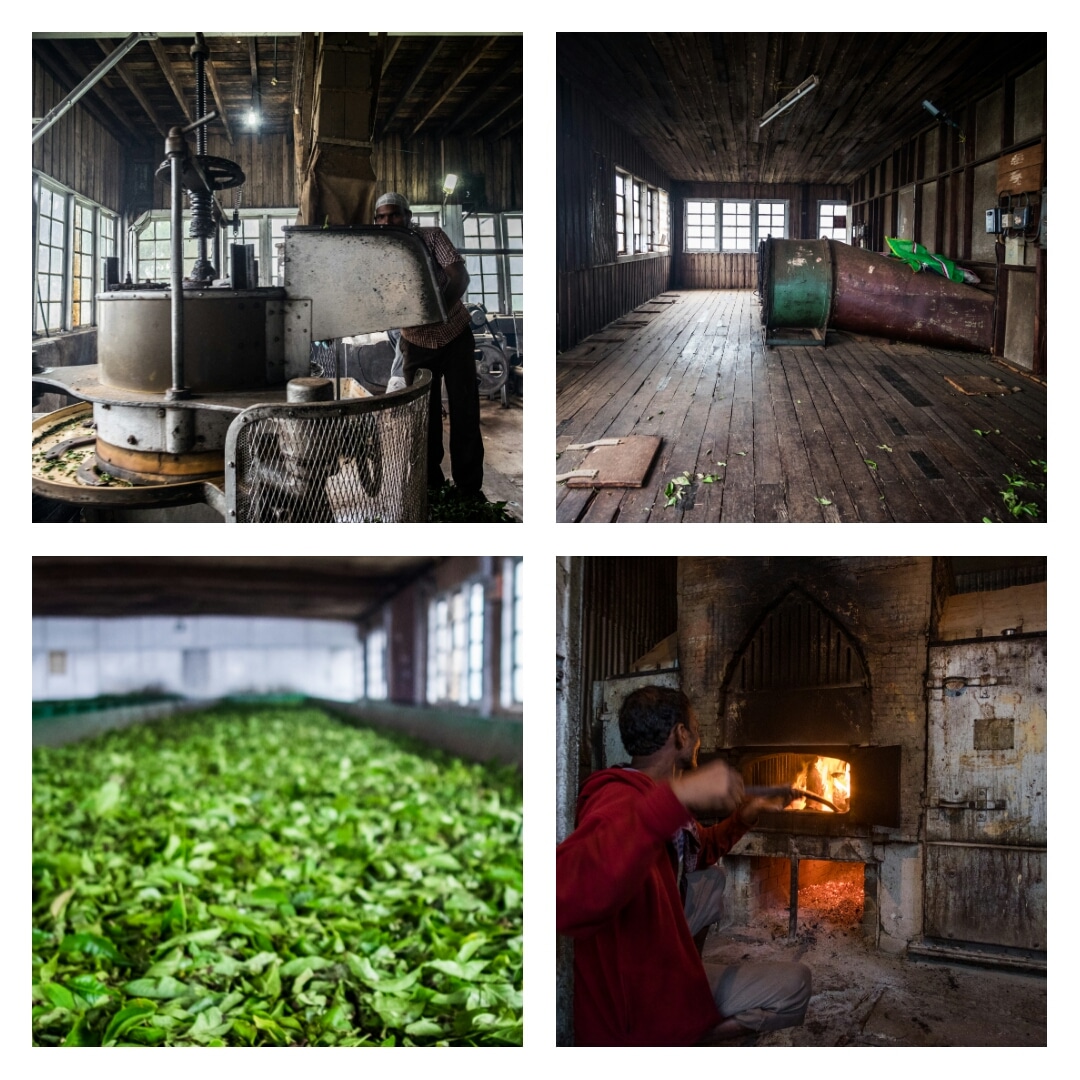
As mentioned before, the journey is not for everyone, and people with back problems, older people and pregnant women are warned against it. But if you are brave enough, or are fit enough to trek, the splendid scenery on the drive up and the sight that greets you once you reach are definitely worth the pain. If you find yourself in Munnar and have a little extra time & money to spend, we definitely recommend a stay, or at the very least a visit to the old factory and the highest tea plantation in the world.
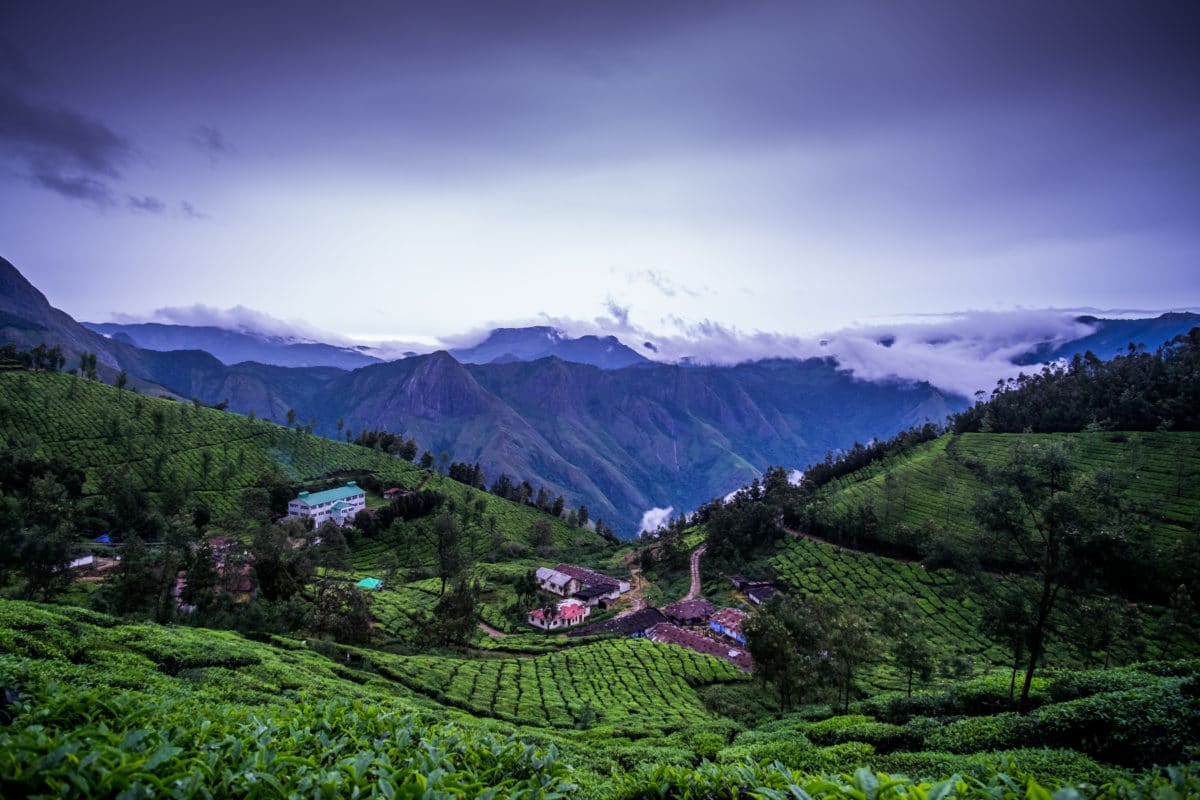
.
Great post on this little known destination. Are those roads that you have captured, always like that ? Slightly drenched, rocky and mist dancing at the edges.
I’ve captured some more photos and the experience at my blog, that I hope I can share here: https://www.travelbagtales.com/road-to-kolukkumalai/
Well through all of the monsoons anyway! When did you go? Will check out your post 🙂
Hello. I listened to a few episodes of your podcast and got to know about your story through “Cyrus Says”. congratulations on the great podcast and this amazing website! keep up the great work and hope you amazing sabbatical is eternally blissful!
Now, kaam ki baat 😀
What’s the best time, according to you, to visit the hillstations in the Nilgiris?
Hey, thanks Sattwik. We can’t really call it a sabbatical anymore . 😉 ON kaam ki baat – It really depends on what you prefer. Probably avoid the monsoons as rains can disrupt travel, though it is the most beautiful time there. If you dont mind the cold, winter will be lovely up there, bonfires and old monk! 🙂 If not summer is also great to escape the heat everywhere else. Happy Travels 🙂
Hey, got to know about blog through your article in The Hindu this saturday.
Two things that caught my attention and would definitely visit are the Berry Lane Hose stay in Coorg and the Pamban Bridge, which are not so far from Bangalore.
Have you guys not ventured out yet into the Ladak Region.
Hi Kiran. Both are great places to visit. Not far from erry Lane is the lovely Tibetan settlement you can visit. Pambam Island is also superb, one of our favorite spots. We have been to Ladakh, but on a short photo expedition. Hope you go back again. You can check out our podcast on that here – https://rediscoveryproject.com/2017/07/11/ladakh-trip-rediscovery-podcast/
Enjoy you travels! 🙂
You still living our dreams….